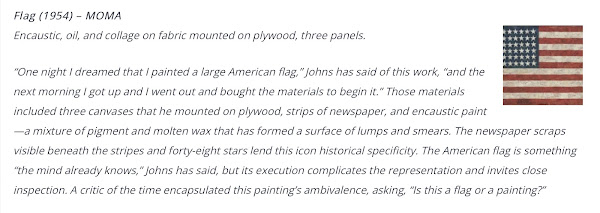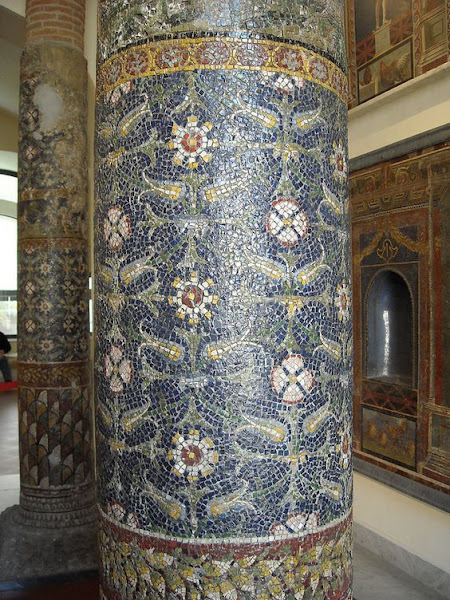Preamble
For your convenience I have listed below other posts in this series on Chinese textiles:
Chinese Textiles: Amy Clague's Brocade Collection (Part I)
Chinese Textiles: Amy Clague's Tapestry Collection (Part I)
Chinese Textiles: Amy Clague’s Tapestry Collection (Part II)
Chinese Textiles: Amy Clague’s Embroidery Collection (Part I)
Chinese Textiles: Amy Clague’s Brocade Collection (Part II)
Chinese Clothing Historical Overview - Part 1
Chinese Clothing: Shenyi and Broad Sleeves - Part I
Chinese Clothing: Shenyi and Broad Sleeves - Part II
Chinese Clothing: Shenyi and Broad Sleeves - Part I [1]
The ancient Chinese attached great importance to two-piece clothing on important ceremonial occasions, believing it to be symbolic of the greater order of heaven and earth. The one-piece style developed from the shenyi of the Warring States period, subsequently evolving into the Han Dynasty robe, the large sleeved chang shan of the Wei and Jin period and the qipao of modern times, all in the form of a long robe.
Shenyi or "deep garment", literally means wrapping the body deep within cloth. This style is deeply rooted in traditional mainstream Chinese ethics which forbid close contact between men and women. At that time, even husband and wife were not allowed to share the same bedroom, the same suitcase, or even the same clothes line. A married woman returning to her mother's home was not permitted to eat at the same table with her brothers. When in public a woman had to keep herself fully covered. These rules and rituals were recorded in great detail in the Confucian "Book of Rites".
Shenyi is made up of an upper and lower piece of clothing, tailored and sewn together in a unique way. There is a chapter in the "Book of Rites" devoted to the making of shenyi. It states that in the Warring States period (476-221 BC) the style of the shenyi had to conform to certain rules and regulations. It had to be long enough not to expose the skin, but short enough not to drag on the floor. The material was elongated into a large triangle; the part above the waist was straight cut and below the waist was bias cut, for ease of movement of the elbow. Moderately formal, the shenyi was designed both for men of letters and warriors, being both functional and simple in style. Shenyi of this period can be seen in silk paintings unearthed from ancient tombs, as well as on clay and wooden figurines found in the same period, which give clear indications of the style.
A woman's dress from the Han Dynasty with overlapping pieces and triple collars. The dress is embroidered with a cloud pattern, and the sleeves and collar are decorated with brocade edgings that make the wearer look very tall and upright.
The materials used for making shenyi tended to be linen, except when black silk was used to make garments for sacrificial ceremonies. Sometimes a colorful decorative band was added to the edges, and embellished with embroidered or painted patterns. When the shenyi is put on, the elongated triangular hem is rolled to the right and then tied right below the waist with a silk ribbon, called dadai or shendai, on which a decorative piece is attached.
A painted wood tomb figure excavated in Xinyang in Henan Province, wearing a long curved dress with decorative plates and angel sleeves. This type of sleeve was often used for flexible movement of the elbow and wrist. Jackets and skirts were everyday clothes, with the skirt pieces overlapping at the back and decorative jade plates in the front of the waist.
Later, leather belts appeared in central Chinese regions as a result of the influence of nomadic tribes. The belt buckles were often intricately made, becoming an important craft during the Warring States period. Large belt buckles could be as long as thirty centimeters, whereas short ones were three centimeters in length. They were made of stone, bone, wood, gold, jade, copper or iron, with the most extravagant ones decorated with gold and silver, carved with intricate patterns or embellished with jade or glass beads.
This buckle is decorated with a repoussé winged dragon, a motif that had matured during Han, and was already emblematic of the court. It is set with cabochons of turquoise and agate. Turquoise had been used throughout the Bronze Age for decorative inlay in metal, and it combines here with the agate and gold with great decorative effect. While perhaps not in classic Han court taste, this luxurious buckle is exactly the type of object that would have impressed rulers of remote provinces.
By the time of the Han Dynasty, shenyi evolved into what is called qujupao, or curved gown, a long robe with a triangular front piece and a rounded hem. The straight gown or zhujupao was popular at this time as well, also called the chan or yu. When the straight gown first appeared, it was not considered appropriate as ceremonial wear, for wearing out of the house or even for receiving guests at home. In Shiji, records of the grand historian, comments are recorded on the disrespectful nature of wearing chan and yu to court. The taboo may have originated from the fact that, before the Han Dynasty, people in the central plains wore trouser legs joined just at the waist, similar to pants worn by Chinese infants. Therefore, it may have been the case that the outer garment did not sufficiently cover the body, resulting in disgrace for the wearer.
A drawing of a colored embroidery pattern of dragon, phoenix and tiger.
When dressing etiquette is discussed in Confucian classics, it states that the outer garment must not be lifted, even in hot weather. The only occasion when lifting the outer garment was acceptable was when crossing a river. People of the central plains had to kneel before they sat. There were written rules on not being allowed to sit with both legs forward, as sitting in this forbidden posture may result in disgrace. Later on, as a result of the influence of the nomadic tribes, trousers with crotchesa became acceptable to the people of the central plains.
A printed Han Dynasty brocade robe.
Note: The Chinese word, bian, means plaited hair or a cord. Bian, used to describe the braid in the Manchu queue hairstyle, was originally applied by the Han dynasty to the Xiongnu. Bian is where one separates hair into several strands and interwines them into braids. This hairdo originates from the late society of the primitive age. The hairstyle of the Han women changed dramatically around the Warring States period (475 - 221 BC). Later, a new hairdo,the bun, came into fashion, and braids became less popular. Braids returned to fashion for Han women in the Qing dynasty and the Republic of China period. Women at that time liked to braid their hair into one single long plait which normally hung over the knee, sometimes reaching the ground. Women who wore braids were usually single and those who were married wore buns instead. This hairstyle was popular again in the 1980s. At the beginning of the 1980s it was replaced by all types of curly and straight hairstyles.
Manchu married women must arrange their hair into a bun, with a silver Bian fang (an ornamental stick) thrust in it, called Gaoliangtou (sorghum-shaped hairstyle). The most typical one is the Liangbatou: tying the hair on the top of the head, plaiting it into a shape of swallow tail, letting the long hair hang on the back of the neck, and putting a fan-shaped hair coronet on it. This hairstyle is called Qitou (hair of the Manchu nobility) or Jingtou (hair of the capital).
Reference:
[1] Chinese Clothing, H. Mei, Cambridge University Press (2011).
For your convenience I have listed below other posts in this series on Chinese textiles:
Chinese Textiles: Amy Clague's Brocade Collection (Part I)
Chinese Textiles: Amy Clague's Tapestry Collection (Part I)
Chinese Textiles: Amy Clague’s Tapestry Collection (Part II)
Chinese Textiles: Amy Clague’s Embroidery Collection (Part I)
Chinese Textiles: Amy Clague’s Brocade Collection (Part II)
Chinese Clothing Historical Overview - Part 1
Chinese Clothing: Shenyi and Broad Sleeves - Part I
Chinese Clothing: Shenyi and Broad Sleeves - Part II
Chinese Clothing: Shenyi and Broad Sleeves - Part I [1]
The ancient Chinese attached great importance to two-piece clothing on important ceremonial occasions, believing it to be symbolic of the greater order of heaven and earth. The one-piece style developed from the shenyi of the Warring States period, subsequently evolving into the Han Dynasty robe, the large sleeved chang shan of the Wei and Jin period and the qipao of modern times, all in the form of a long robe.
Shenyi or "deep garment", literally means wrapping the body deep within cloth. This style is deeply rooted in traditional mainstream Chinese ethics which forbid close contact between men and women. At that time, even husband and wife were not allowed to share the same bedroom, the same suitcase, or even the same clothes line. A married woman returning to her mother's home was not permitted to eat at the same table with her brothers. When in public a woman had to keep herself fully covered. These rules and rituals were recorded in great detail in the Confucian "Book of Rites".
Shenyi is made up of an upper and lower piece of clothing, tailored and sewn together in a unique way. There is a chapter in the "Book of Rites" devoted to the making of shenyi. It states that in the Warring States period (476-221 BC) the style of the shenyi had to conform to certain rules and regulations. It had to be long enough not to expose the skin, but short enough not to drag on the floor. The material was elongated into a large triangle; the part above the waist was straight cut and below the waist was bias cut, for ease of movement of the elbow. Moderately formal, the shenyi was designed both for men of letters and warriors, being both functional and simple in style. Shenyi of this period can be seen in silk paintings unearthed from ancient tombs, as well as on clay and wooden figurines found in the same period, which give clear indications of the style.
A woman's dress from the Han Dynasty with overlapping pieces and triple collars. The dress is embroidered with a cloud pattern, and the sleeves and collar are decorated with brocade edgings that make the wearer look very tall and upright.
The materials used for making shenyi tended to be linen, except when black silk was used to make garments for sacrificial ceremonies. Sometimes a colorful decorative band was added to the edges, and embellished with embroidered or painted patterns. When the shenyi is put on, the elongated triangular hem is rolled to the right and then tied right below the waist with a silk ribbon, called dadai or shendai, on which a decorative piece is attached.
A painted wood tomb figure excavated in Xinyang in Henan Province, wearing a long curved dress with decorative plates and angel sleeves. This type of sleeve was often used for flexible movement of the elbow and wrist. Jackets and skirts were everyday clothes, with the skirt pieces overlapping at the back and decorative jade plates in the front of the waist.
Later, leather belts appeared in central Chinese regions as a result of the influence of nomadic tribes. The belt buckles were often intricately made, becoming an important craft during the Warring States period. Large belt buckles could be as long as thirty centimeters, whereas short ones were three centimeters in length. They were made of stone, bone, wood, gold, jade, copper or iron, with the most extravagant ones decorated with gold and silver, carved with intricate patterns or embellished with jade or glass beads.
This buckle is decorated with a repoussé winged dragon, a motif that had matured during Han, and was already emblematic of the court. It is set with cabochons of turquoise and agate. Turquoise had been used throughout the Bronze Age for decorative inlay in metal, and it combines here with the agate and gold with great decorative effect. While perhaps not in classic Han court taste, this luxurious buckle is exactly the type of object that would have impressed rulers of remote provinces.
By the time of the Han Dynasty, shenyi evolved into what is called qujupao, or curved gown, a long robe with a triangular front piece and a rounded hem. The straight gown or zhujupao was popular at this time as well, also called the chan or yu. When the straight gown first appeared, it was not considered appropriate as ceremonial wear, for wearing out of the house or even for receiving guests at home. In Shiji, records of the grand historian, comments are recorded on the disrespectful nature of wearing chan and yu to court. The taboo may have originated from the fact that, before the Han Dynasty, people in the central plains wore trouser legs joined just at the waist, similar to pants worn by Chinese infants. Therefore, it may have been the case that the outer garment did not sufficiently cover the body, resulting in disgrace for the wearer.
A drawing of a colored embroidery pattern of dragon, phoenix and tiger.
When dressing etiquette is discussed in Confucian classics, it states that the outer garment must not be lifted, even in hot weather. The only occasion when lifting the outer garment was acceptable was when crossing a river. People of the central plains had to kneel before they sat. There were written rules on not being allowed to sit with both legs forward, as sitting in this forbidden posture may result in disgrace. Later on, as a result of the influence of the nomadic tribes, trousers with crotchesa became acceptable to the people of the central plains.
A printed Han Dynasty brocade robe.
Note: The Chinese word, bian, means plaited hair or a cord. Bian, used to describe the braid in the Manchu queue hairstyle, was originally applied by the Han dynasty to the Xiongnu. Bian is where one separates hair into several strands and interwines them into braids. This hairdo originates from the late society of the primitive age. The hairstyle of the Han women changed dramatically around the Warring States period (475 - 221 BC). Later, a new hairdo,the bun, came into fashion, and braids became less popular. Braids returned to fashion for Han women in the Qing dynasty and the Republic of China period. Women at that time liked to braid their hair into one single long plait which normally hung over the knee, sometimes reaching the ground. Women who wore braids were usually single and those who were married wore buns instead. This hairstyle was popular again in the 1980s. At the beginning of the 1980s it was replaced by all types of curly and straight hairstyles.
Manchu married women must arrange their hair into a bun, with a silver Bian fang (an ornamental stick) thrust in it, called Gaoliangtou (sorghum-shaped hairstyle). The most typical one is the Liangbatou: tying the hair on the top of the head, plaiting it into a shape of swallow tail, letting the long hair hang on the back of the neck, and putting a fan-shaped hair coronet on it. This hairstyle is called Qitou (hair of the Manchu nobility) or Jingtou (hair of the capital).
Reference:
[1] Chinese Clothing, H. Mei, Cambridge University Press (2011).






























